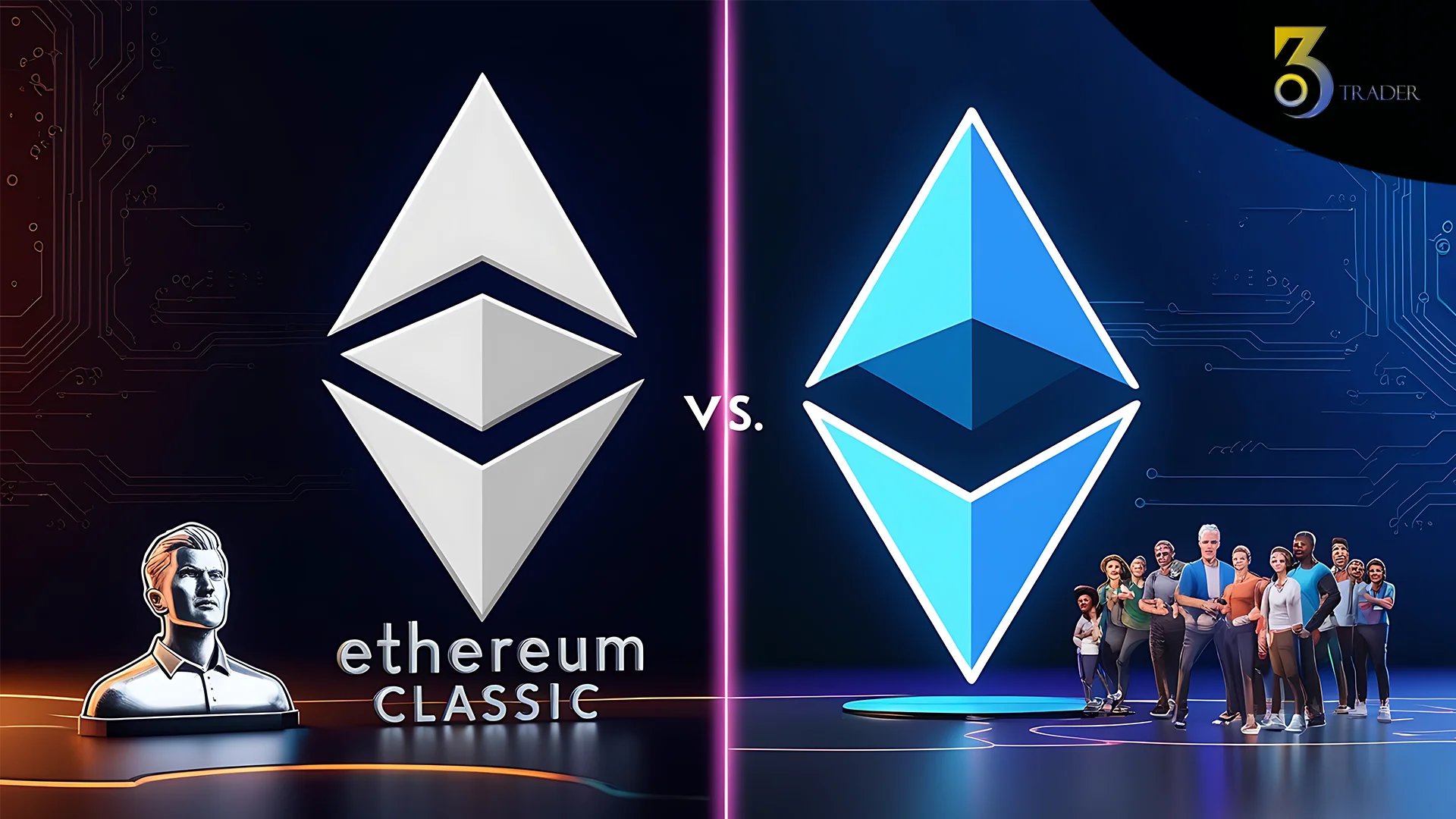Ethereum Classic (ETC) is one of the oldest and most resilient networks in the cryptocurrency landscape. Born out of a fundamental disagreement within the Ethereum community, Ethereum Classic represents the original Ethereum blockchain that remained intact after a major split in 2016. Despite sharing a similar name and technical foundation, Ethereum Classic and Ethereum (ETH) have taken different paths in both purpose and technology. Here’s a closer look at what Ethereum Classic is, its history, and how it differs from the Ethereum we know today.
The Origins of Ethereum Classic
To understand Ethereum Classic, it’s essential to first understand its origin story, which begins with a notable event called “The DAO hack.” The DAO (Decentralized Autonomous Organization) was one of the first major projects on Ethereum, designed as a decentralized investment fund where participants could vote on and fund projects directly through the blockchain. In 2016, however, a security flaw in The DAO’s smart contract code was exploited, leading to a loss of over $50 million worth of Ether.
This hack sparked a heated debate in the Ethereum community about how to respond. One group believed that the blockchain should be immutable—that “code is law”—and argued that any intervention to recover funds would violate the decentralized nature of blockchain. The other side felt that an exception should be made to restore the lost funds and protect the community, as The DAO’s security flaw had led to a significant setback.
The Hard Fork: Ethereum (ETH) vs. Ethereum Classic (ETC)
To resolve the situation, a hard fork was proposed. A hard fork is a significant protocol update that creates two separate blockchains: one that follows the new rules and one that adheres to the original codebase. In July 2016, the Ethereum community voted to go ahead with the hard fork to reverse the hack, allowing them to recover the lost funds and move forward with new protocol updates. This new chain, which would eventually become the second-largest cryptocurrency by market cap, was called Ethereum (ETH).
However, a faction of the community rejected the hard fork, believing that tampering with the blockchain’s history would compromise Ethereum’s core principle of immutability. This group chose to continue with the original, unaltered blockchain, which became known as Ethereum Classic (ETC).
Key Differences Between Ethereum Classic and Ethereum
Although they share a common origin, Ethereum Classic and Ethereum have developed distinct technical and philosophical differences over the years. Here’s how they differ:
1. Philosophical Approach: Immutability vs. Adaptability
- Ethereum Classic: Ethereum Classic adheres strictly to the “code is law” philosophy, meaning that once a transaction is recorded, it cannot be altered under any circumstances. ETC prioritizes immutability above all, viewing blockchain as an unchangeable ledger that should never be altered.
- Ethereum: Ethereum, on the other hand, has adopted a more adaptable approach. By prioritizing community consensus and continuous improvement, Ethereum has shown it’s willing to make changes to its code, such as transitioning to a proof-of-stake (PoS) model to improve scalability and energy efficiency.
2. Consensus Mechanism: Proof of Stake (PoS) vs. Proof of Work (PoW)
- Ethereum Classic: Ethereum Classic continues to operate on a proof-of-work (PoW) consensus mechanism, similar to Bitcoin. In this model, miners compete to validate transactions and secure the network, a process that requires significant computational power and energy.
- Ethereum: In contrast, Ethereum transitioned to a proof-of-stake (PoS) model with the Ethereum 2.0 upgrade. This shift to PoS allows Ethereum to be more energy-efficient and scalable, reducing the need for intensive mining and allowing users to stake their ETH to participate in transaction validation.
3. Security and Development Focus
- Ethereum Classic: Ethereum Classic has had to tackle several security challenges since the hard fork, including multiple 51% attacks in which bad actors briefly took control of the network. Although the Ethereum Classic community has made efforts to improve security, these attacks have highlighted the risks associated with smaller blockchain networks.
- Ethereum: As the more popular and valuable chain, Ethereum has a large developer community working on protocol upgrades, security, and innovations. This has made Ethereum a preferred platform for decentralized applications (DApps) and smart contracts, helping it maintain a strong, secure network with continued development.
4. Smart Contract Flexibility and Adoption
- Ethereum Classic: While ETC supports smart contracts, its development ecosystem is smaller, and it lacks the same level of adoption as Ethereum. Consequently, fewer developers are creating decentralized applications (DApps) or integrating ETC into new projects, limiting its growth potential.
- Ethereum: Ethereum has become the go-to platform for smart contracts, DeFi applications, and NFTs. With a robust community and strong institutional support, Ethereum has established itself as the dominant smart contract platform, continually pushing forward with new developments.
5. Market Perception and Value
- Ethereum Classic: Ethereum Classic is seen as a more niche cryptocurrency, often appealing to purists who value the blockchain’s immutability above all else. Although it has a loyal following, ETC’s market value is much lower than that of Ethereum, and its network lacks the extensive DApp ecosystem and investor confidence that Ethereum enjoys.
- Ethereum: Ethereum’s adaptability and growth-focused approach have made it one of the most valuable and widely-used blockchain platforms in the world. It continues to attract developers, institutional investors, and enterprise partnerships, further bolstering its market value and influence.
The Future of Ethereum Classic and Ethereum
The future for Ethereum Classic and Ethereum remains distinct. Ethereum is positioned to continue as a leading blockchain platform, driving innovation with its PoS consensus, scalability improvements, and ever-growing DApp ecosystem. Its adaptability and community-driven governance make it a favorite among developers and businesses.
Ethereum Classic, however, remains steadfast in its commitment to the principles of immutability and decentralization. While it may never reach the level of adoption or market value that Ethereum has, ETC appeals to a subset of users who prioritize the integrity of an unaltered blockchain. Future security upgrades and efforts to strengthen the network could help Ethereum Classic maintain its place in the blockchain ecosystem as a symbol of unchangeable decentralized technology.
Final Thoughts
Ethereum Classic and Ethereum represent two sides of the same coin, each embodying different visions of what blockchain technology can be. For those who value the original blockchain ethos of immutability, Ethereum Classic offers a way to support that principle. For those looking to engage in a more flexible, scalable, and developer-friendly environment, Ethereum remains a powerful platform for innovation.
Whether you align with Ethereum Classic’s philosophy or prefer Ethereum’s adaptability, understanding these differences can help investors and enthusiasts make informed choices as they navigate the evolving world of blockchain technology.




